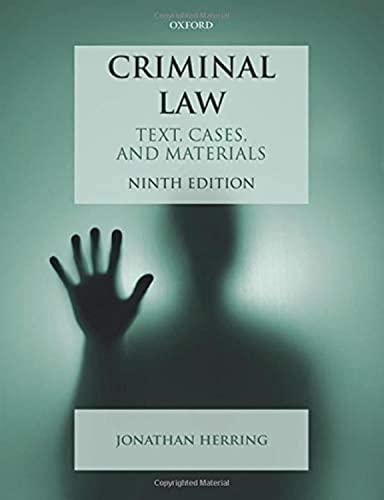Question
In Plessy v. Ferguson, the Supreme Court held that the Fourteenth Amendment, which prohibits states from making or enforcing any law that denies its citizens
In Plessy v. Ferguson, the Supreme Court held that the Fourteenth Amendment, which prohibits states from making or enforcing any law that denies its citizens equal protection of those laws, allowed the separation of citizens based on race so long as each race was treated equally. Separate, but equal. That decision was the law of the land for more than 50 years. Then, in 1954, the Supreme Court in Brown v. Board of Education reversed course, holding that "separate but equal" has no place in public education. To reach that decision, the Court recognized that separating children because of their race could deprive Black children of education and mental developmen[ lead to feelings of inferiority, and affect their motivation to learn. The remedy for this constitutional violation was requiring integration, or, to use another word, diversity In the decades that followed, schools sought to increase racial diversity in classrooms and campuses. For example, schools held admission places for certain minority groups or gave a "tip" or "plus" to students based on their race. But those programs have faced legal challenges on grounds that giving a preference to someone because of their race is inconsistent with the idea that the Constitution should be color blind The debate over whether the guarantee of equal protection allows consideration of race continues today. On the one hand, the Supreme Court has said the Fourteenth Amendment does not permit using race-based measures to cure the effects of societal discrimination. But in the same opinion, the Court said consideration of how race affected a person's life may be permitted. So where does that leave Brown Court's legacy on the promise of integration today? Is racial diversity, the goal set forth in Brown, still a benefit to public schools? And if not racial diversity, is there another type of diversity that would be a bigger benefit to you as a student? Or has the goal of color blindness in education been achieved? Explain vour answer using what you learned in the curriculum and the cases that have been discussed. You may support your answer with personal experiences if appropriate.
Step by Step Solution
There are 3 Steps involved in it
Step: 1

Get Instant Access to Expert-Tailored Solutions
See step-by-step solutions with expert insights and AI powered tools for academic success
Step: 2

Step: 3

Ace Your Homework with AI
Get the answers you need in no time with our AI-driven, step-by-step assistance
Get Started


